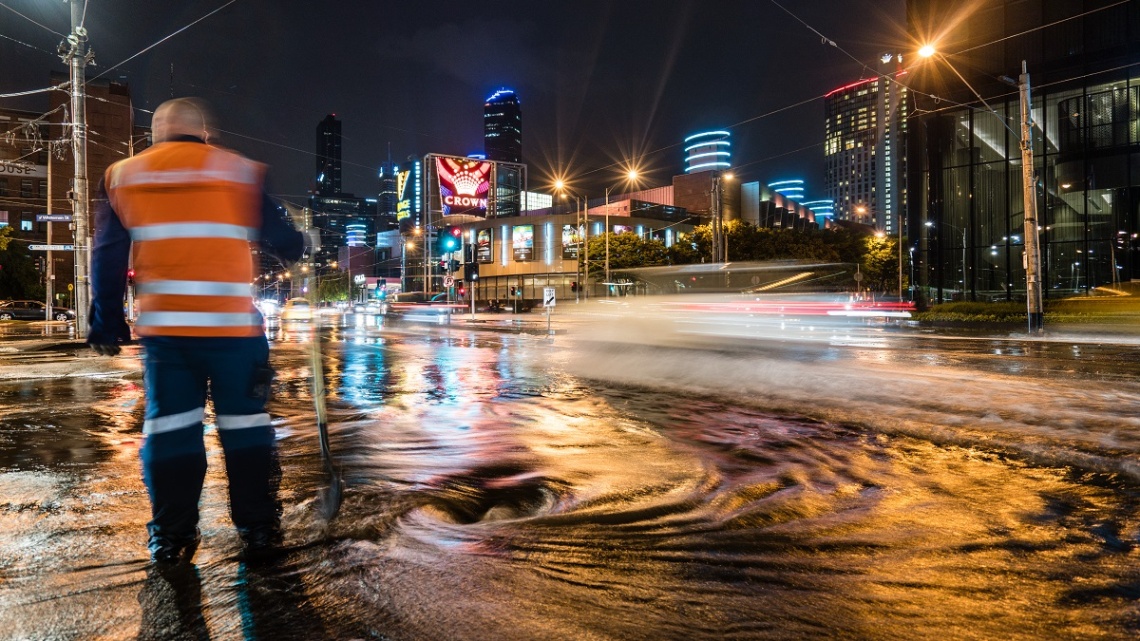
Whether it’s arrival and departure boards showing cancelled trains because of flooding, or images of submerged roads in rural villages, extreme weather events take their toll on infrastructure and the people who rely on it.
Globally, the narrative is a similar one, with heatwaves and unprecedented rainfall levels affecting everything from roads and railways to bridges and sewers, leading many analysts to describe infrastructure resilience in the face of climate change as a time bomb.
That sense of urgency has been highlighted this year by In Deep Water?, a report by think tank Bright Blue, which examined how flooding endangers all types of infrastructure in the UK. Its conclusion was not optimistic and revealed that the UK is not adequately prepared for the increased risk.
“Flooding is the most serious climate-related risk to the UK in terms of the hazards it presents to community functioning,” says environmental and natural resource economist Helen Jackson, the report’s author. “Climate-resilient infrastructure is key for disaster response. And infrastructure which isn’t resilient can be unsafe and its failure can amplify the impacts.”
This year’s report by the Intergovernmental Panel on Climate Change reinforced the reality that climate change is already causing more frequent and more severe extreme weather events. It revealed that higher precipitation intensity could increase the risk of flooding and they identified bridges as one of the infrastructures most at risk.
Engineers and planners look at climate modelling at the outset of their projects and factor forecasts into their designs. Bridges are built to withstand higher magnitude flood events and sea-level rises, with reinforced foundations and greater height clearances from the waters below. Road construction is also changing, to accommodate the damaging impact of flood water as roads that are underwater for days can be impassable even after the waters have receded, causing continued disruption for entire communities.
Engineers and planners look at climate modelling at the outset of their projects and factor forecasts into their designs
Engineers are finding a way to weatherproof roads after a harsh lesson learnt in Queensland, Australia, which experienced several extreme climate events, including extensive flooding that damaged 19,000km of the state’s road network in 2010-11.
“Queensland used a process called foamed bitumen stabilisation,” says Caroline Evans, chair of the climate change and road network resilience committee for the World Road Association (PIARC). “The hot bitumen is injected with limited amounts of air and cold water, which forms a water-resistant layer within the road itself. The process was in place in Queensland by the time Tropical Cyclone Debbie hit the state in 2017 and when the waters receded, the roads were still intact and needed minimal maintenance.”
Not all critical infrastructure is above ground. The Thames Tideway Tunnel project, dubbed the Super Sewer, is in progress. A designated nationally significant infrastructure project, the 25km tunnel is being built to solve a historical problem that has been growing more acute every year, as London’s Victorian sewers fail to cope with the amount of material flowing through the network. Even drizzle can cause untreated sewage to spill into the Thames, creating combined sewer overflows (CSO) incidents. With the prospect of increased rainfall levels, engineers have future-proofed the tunnel to cope with Met Office climate projections that run to 2080.
“There are currently around 50 CSO discharges per year, but the project is designed to restrict this to four or less,” reveals Roger Bailey, Tideway’s chief technical officer. “The future performance of the tunnel has been tested against rainfall predictions from the UK government’s median emissions climate projections for 2080. Parts of our new public realm are floodable and compliant with the Environment Agency’s predictions for rising sea levels.”
But the solution to London’s sewage problem presented planners and engineers with a fresh one: how to minimise the environmental footprint of the construction phase? Hundreds of lorry journeys would be required every day to transport materials to the site and embodied carbon from it. The operators turned to the Thames itself, relying on river barges rather than lorries.
A 1,000-tonne barge produces an average of 90% less carbon dioxide than the HGV equivalent and by the end of the tunnelling phase in April this year, more than one million tonnes of material had been transported by river, saving more than 115,000 HGV journeys. Tideway estimates that more than 200 lorry journeys have been taken off the road each day. This innovative thinking is critical for a project’s legitimacy and shows that the level of climate resilience can be established long before any ground is broken.
Climate-resilient infrastructure is key for disaster response
The same is true even for existing structures that require resilience to be retrofitted. Take Dawlish in Devon, where the sea wall collapsed after storms in February 2014, forcing a full line closure for eight weeks, cutting off the South West from the rest of the country by rail. It was decided that a new wall would be built in front of the old one, using new construction techniques. Defences were twisted into the rock like a screw, rather than being driven in, to achieve a depth that would withstand future rises in the sea level and tidal swells.
But before any of this work started, the height of the wall and profile of the capping were analysed extensively, with lab-based physical modelling used to verify the computer-based modelling with an outcome that predicted the project would be climate-resilient for 100 years.
The Dawlish and Tideway projects show how old and new infrastructure projects can be made climate-adaptive, shielding against the effects of rapidly changing environmental conditions. The goal is to remove the weak links, even though the course of climate change is unclear and we don’t know what’s coming down the road, the tracks or even the pipeline in the coming decades.
